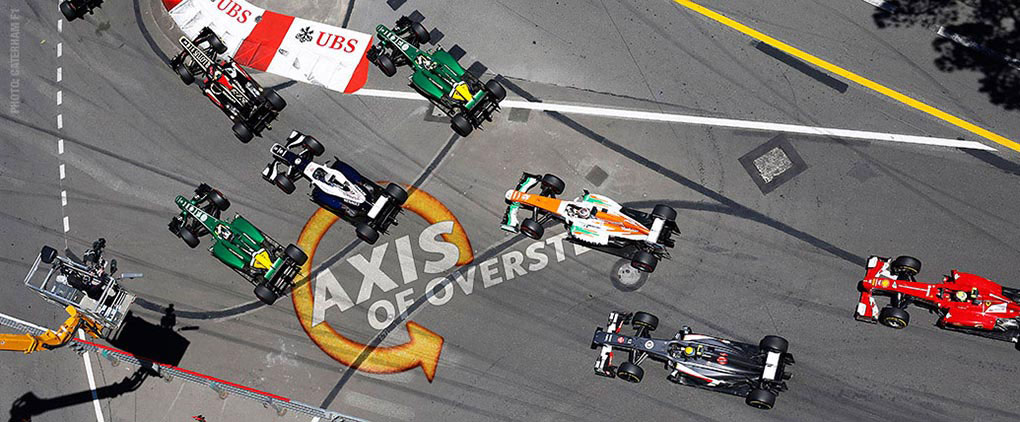There has been much rumbling and groaning recently over the 2014 engine formula change, from 2.4 L v8 to 1.6 L V6 turbo. Bernie says he does not like it, smaller teams say it will be too expensive but like or not, it's coming.
This will be, depending on how you count, the ninth different engine configuration allowed in Formula 1 since 1954. At times in the past there were capacity limits and equivalency formulas but manufacturers were free to come up with their own technical configuration that fit within that rule box. The engine freeze of 2006 stopped much "big picture" creative engineering and manufacturers focused on optimization to make small gains in efficiency and drivability.
2014 will be a big change and again the internal combustion part of the engine will be tightly controlled, to the point of limiting fuel flow at specific RPM but , crucially, the new Energy Recovery part of the power plant will allow for creative thinking by engine techs.
You will need to get familiar with a whole new alphabet soup, Gone from F1 will be KERS and DDRS but we will get ERS-K and ERS-H to play around with at cocktail parties!
Energy Recovery System - Kinetic is essentially the same as today's KERS, kinetic energy is harvested from the engine during release and stored.
Energy Recovery System- Heat is energy harvested from the exhaust side.
What makes this interesting for engines is that there is flexibility in the rules as to how these two systems interact and are used harvesting and releasing energy. This will mean different manufacturers could choose different strategies to optimize their units and this will lead to very different engine behaviors. ERS-H will charge the batteries but it will also be able to spool the turbo and finding the sweet spot in that given rule box will be crucial.
In these Renault renderings, the ERS-K is the turquoise part on the bottom left of the block while the ERS-H is in the V between the banks. Air is fed through the intake snorkel to one side of the compressor and through the intercooler. The turbo is driven by the hot exhausts but also by the ERS-H unit which, like today's KERS can work both as engine and generator. You can imagine a strategy might be to cut lag by using electricity to spool the turbine. It will be interesting to see how different manufacturers implement strategies with these engines which are expected to produce about the same power as the current 2.4 V8 units.
Another interesting aspect will be how exhausts are handled, as you know turbos make engines quieter and the exhaust flow has much less energy than a normally aspirated car. In turn this will make all this blown exhaust nonsense less effective and crucial.
One thins that will not happen in 2014 will be full electric power in pit lane provision of the rules. Manufacturers were unhappy with the extra weight and size of the batteries needed to make that happen so the whole thing has been kicked down
Use of Electric Power in the Pit Lane in 2014



it seems quite cool from the engineering point of view. i just hope they have more power than current v8s
ReplyDeleteCould the teams use an electrically-driven centrifugal supercharger and still blow the diffuser with an otherwise undisturbed exhaust? How about introducing clutch packs / planetary gears between the two compressor wheels so as to increase exhaust velocity at certain times by spinning the exhaust faster than the inlet exhaust flow pushes it? Do the rules allow for this? I could see Red Bull or McLaren being tricky with exhaust tuning.
ReplyDeleteCall me old school, but I think all this energy recovery is nonsense. They should just run twin turbos with EWGs like they did in the 70s and 80s. The cars could make more power than they do now and they would sound great which would keep Bernie and the fans happy.
ReplyDeleteIf appealing to the interests of environmentally proactive manufactures is their concern (which it is), maybe they should condense all the Asia races into one part of the season, instead of making multiple journeys back and fourth. That's got to be more expensive and harmful than running high strung power plants in 19 race weekends.
Does someone know if the mercedes benz rotary valve is allowed ? they where going to introduce it and FIA banned it some years ago..
ReplyDeleteSurely this can't be true. Have we found a area of F1 that Bernie can't control?
ReplyDelete"If appealing to the interests of environmentally proactive manufactures is their concern (which it is), maybe they should condense all the Asia races into one part of the season, instead of making multiple journeys back and fourth. That's got to be more expensive and harmful than running high strung power plants in 19 race weekends."
ReplyDeleteWell said.
I suspect it's all a marketing ploy designed to appeal to prospective, new viewers who for some reason will find the idea of half-4ssed-electric/thermo-V6-dildo engines appealing.
Said "new viewers" are probably female or Asian.
Really nice! We're also interested in this topic. I and my team i DE! But in my opinion old cars are the best, engines are very strong and we can make a lof of mods.
ReplyDelete